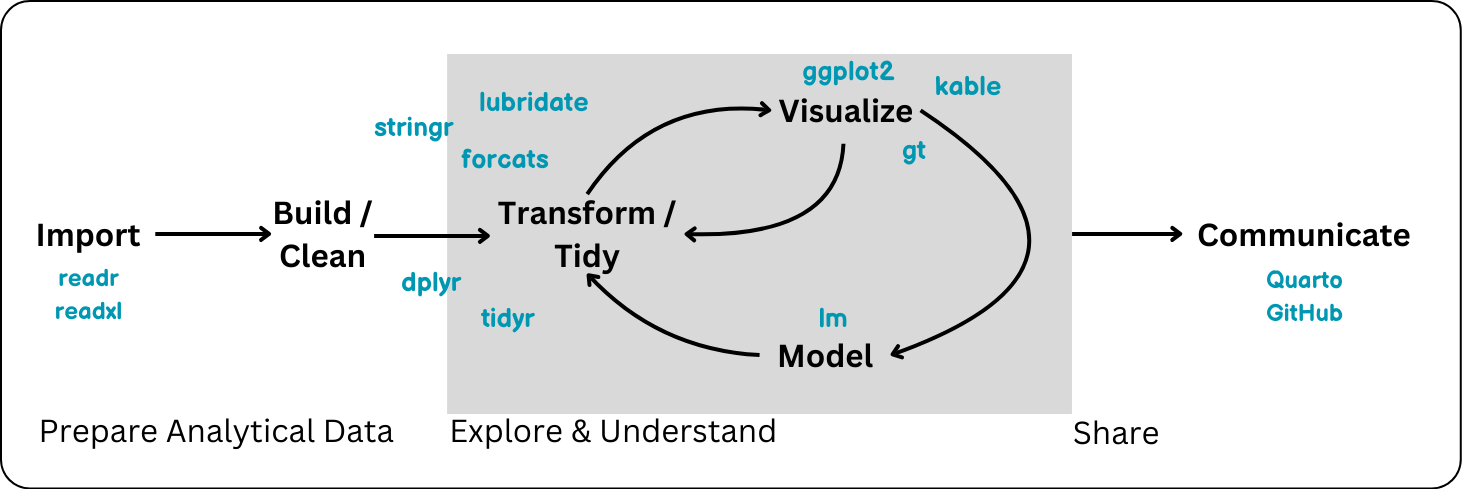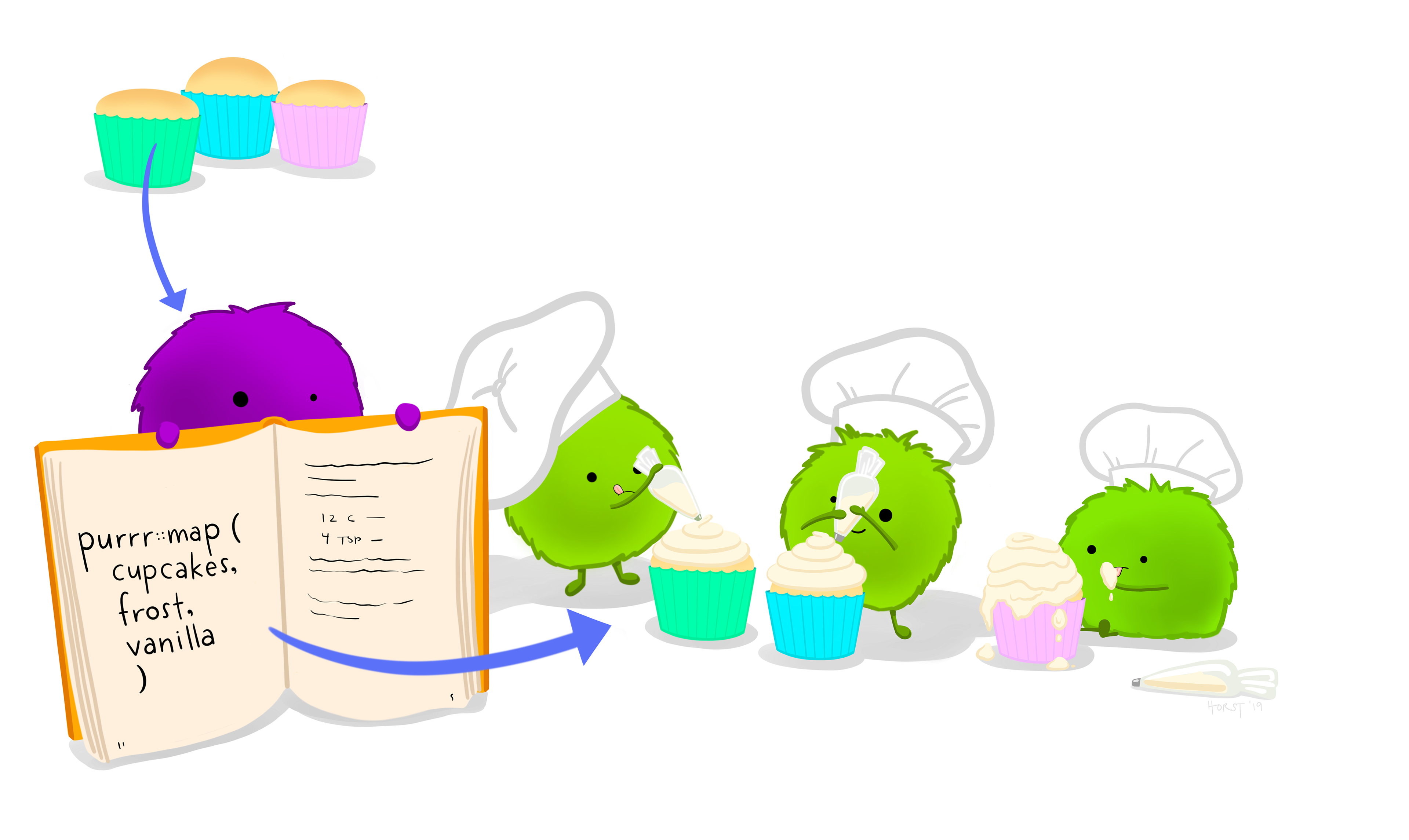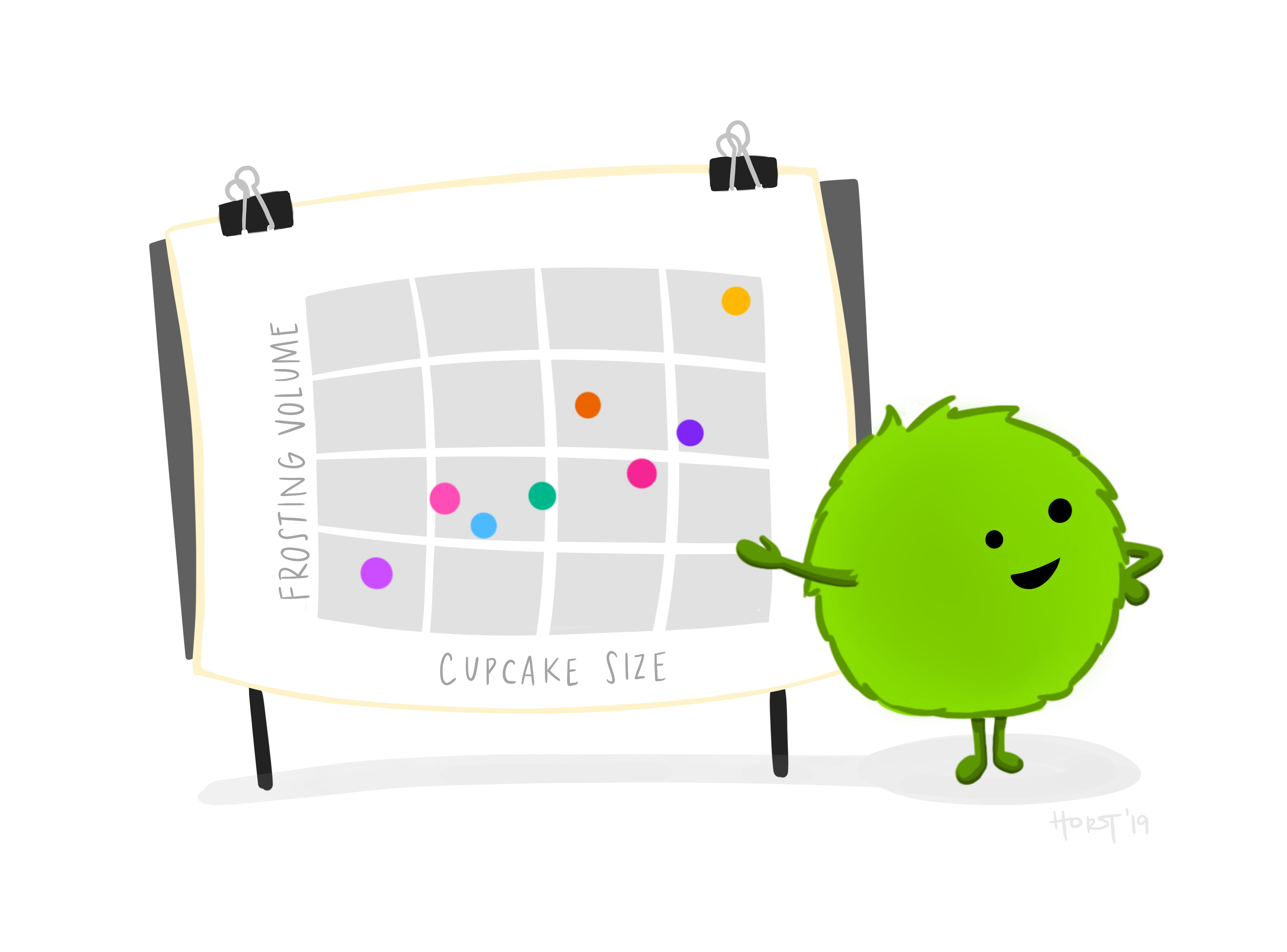Course Review and Wrap-Up
Thursday, June 5
Today we will…
- Course Review
- Final Exam: What to Expect
- Remaining Q & A
- Work Time
- Final Project
- Final Exam Practice
Course Review
Tools for the Data Science Workflow

Guiding Principles for Statistical Computing
- Reproducibility
- Efficiency
- Readability
- Communication
- Ethics
Reproducibility
You can to send your code to someone else, and they can jump in and start working right away.
This means:
- Files are organized and well-named.
- References to data and code work for everyone.
- Package dependency is clear.
- Code will run every time, even if data values change.
- Analysis process is well-explained and easy to read.
Tools for Reproducibility
Quarto Notebooks
Relative file paths
set.seed()for simulations / random samplingCreating report-ready tables and plots using R code
Generalizing code as much as possible
- e.g. not “hard-coding” column or row indices
- e.g. regular expressions
Git & GitHub
Efficiency
We mean a number of things by efficiency including:
- Using as few steps / lines of code as possible
- Not unnecessarily saving variables or objects
- Computational efficiency
Tools for Efficiency
- Piping and pipelines
|> - Recognizing when long vs. wide format will be better for a task (
pivot) across()andif_any()- NO FOR-LOOPS
- taking advantage of vectorization
- functional programming with
purrr
- user-written functions
Efficiency in Practice
- Programmers will always be searching for efficiency!
- Approach a problem the way that makes the most sense for you first, then consider if you can make your approach or code more efficient.

Readability
- Hopefully your code can read line a sentence!
- Other’s and your future self will thank you
- With big projects you will be writing 1,000’s of lines of code – messy code gets exponentially more difficult to read
Tools for Readability
- Piping and pipelines
|> - Coding style (spacing, new lines, etc.)
- Using
tidyversepackages / functions - Quarto notebooks

Communication
- Communication may come in many forms:
- emailing your boss / colleague about an analysis
- presenting to clients
- writing a memo for your company
- writing a news article
- writing an academic paper
- creating an infographic instagram post
- creating documentation on GitHub
- etc….
Communication
- How well you code doesn’t really matter unless you can effectively communicate what you did and found!
- I CANNOT STRESS THIS ENOUGH

Tools for Communication
- Quarto notebooks
- Thoughtful plots and tables (
ggplotandkable/gt) - GitHub
- I yelled at you about this a bunch
- Pay attention to how others communicate statistical findings
Ethics
- Data has context
- How are variables defined?
- Where / who does the data come from?
- What is the potential impact of your analysis?
- What does a plot emphasize or potentially cover-up?
My two-cents
Be curious about your data
Take a beat when you run into coding errors
Organize your &$!#% files
Find people whose work you admire and integrate what they do into your workflow
Take pride in your work!

Course Feedback Discussion
In groups of 4 discuss…
Which activities did you find most interesting?
What was the most challenging part of the course?
Is there anything you wish you learned that we didn’t cover?
What helped you when you felt stuck on a problem and/or were debugging code?
What are 1 or 2 of your biggest take-aways from the course?
Take Advanced R!
- STAT 431
- Topics can include:
- more advanced visualization
- websites & graphical user interfaces
- data from API’s
- webscraping
- writing packages
- more advanced statistical algorithms
Final Exam
Final Exam: What to Expect
- The exam is worth a total of 100 points and has 2 parts: General Questions, and Short Answer
- You will have 2 hours and 50 minutes for the entire exam.
- You will complete Part 1: General Questions first.
- This part is closed note and closed computer.
- Part 2: Short Answer.
- A .qmd starter file will be opened at the start of each final.
- Any non-human online resources other than ChatGPT allowed
- I will pass out paper copies of the questions.
Final Exam: What to Expect
The exam is cumulative so you can expect:
- Data manipulations with
dplyrandtidyr. - Data visualizations with
ggplot. - Working with special variable types: strings, factors, and/or dates.
Final Exam: What to Expect
There is an emphasis on the material since the midterm:
- Function writing.
- Functional programming with
map. - Statistical modeling with
lm. - Simulation
- Statistical distributions (
rnorm,dunif, etc.) - Sampling from a finite population (
sampleandslice_sample)
- Statistical distributions (
- Nicely formatted tables
Final Exam: What to Expect
- During university scheduled times in our classroom:
- Section 70: Tuesday 10:10-1
- Section 71: Thursday 10:10-1
- Check that your short answer assignment on Canvas is for the right time!
- Plan for taking the full ~3 hours
- bring food, water, drinks 🧋🧉 ☕️, etc.
- bring a computer charger
Office Hours
- Friday (tomorrow) 1 - 2:30pm
- Monday (6/9) 12 - 2pm
- All in-person (25-201)
- Available to meet by appointment (schedule via email)
Final Exam + Final Project Q & A
To do…
- Course Evaluation
- Closes Friday, 6/6 at 11:59pm.
- Final Project Report
- Due Friday, 6/6 at 11:59pm.
- May use up to 4 deadline extensions on project
- Final Exam
- University scheduled time for section
- Alternative times as scheduled and confirmed.